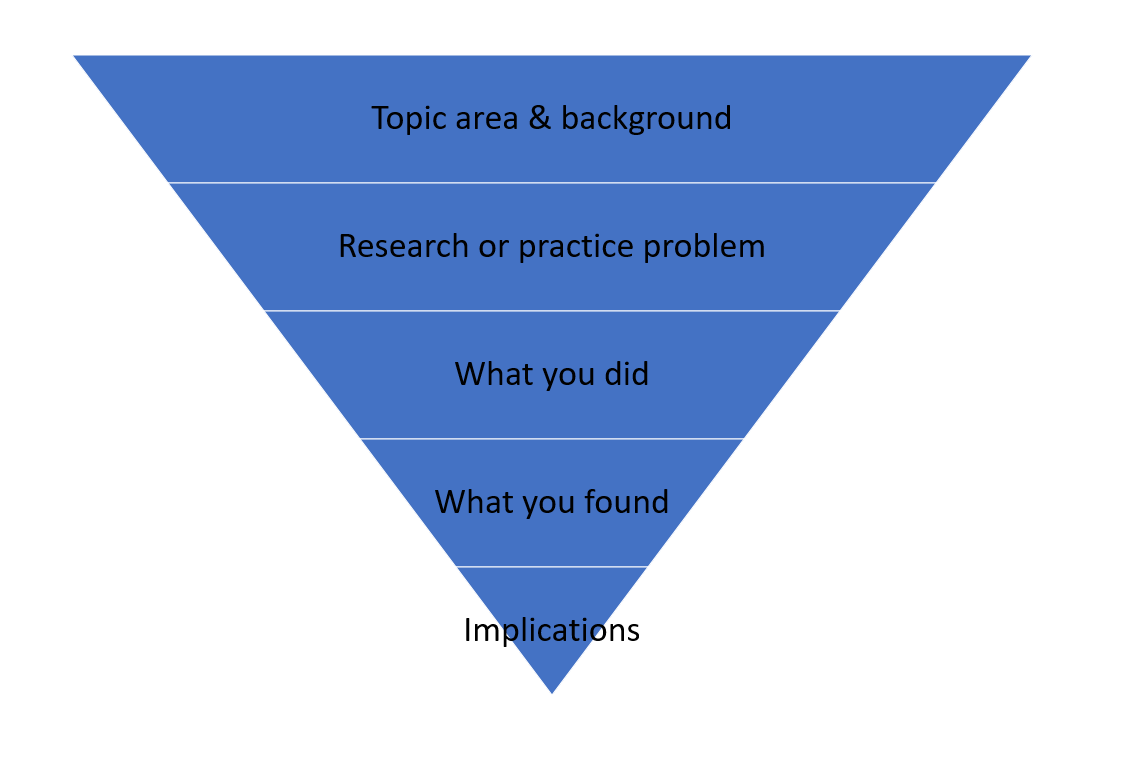
Writing an abstract submission for an oral presentation at a conference
In this post, we share some tips for writing research or practice focused abstracts for an oral presentation at a conference. Collectively, we have wide experience in writing research abstracts for conference submissions and presenting at conferences in various areas of sociology, psychology, and social work. We have reviewed conference abstract submissions and planned conference programs.
Dr Luke Gahan is a Research Fellow at the Australian Institute of Family Studies and an Adjunct Senior Research Fellow at La Trobe University. Luke’s sociological research has focused on families and relationships, health and wellbeing, and gender and sexuality. He was previously an associate editor of Health Sociology Review and a secretary of The Australian Sociological Association.
About conference abstract submissions
When conference organisers are looking to fill their program with speakers, they generally call out for possible presenters to submit an abstract.
An abstract is a short overview of the content that would be covered in the proposed presentation. It is the pitch for your presentation.
Conferences will usually have an overarching theme and a series of streams (or sub-themes) and ask people submitting abstracts to match their submission under one or more of these streams. When the conference organisers are putting together their program of speakers, they are looking for the best submissions that match the conference streams or themes. Depending on the size of the conference, your abstract could be compared to hundreds of other abstracts.
Depending on the discipline, the conference may also give you the option to select the type of presentation you would like to give. The options may include:
- oral presentation
- poster presentation (digital or physical, and may include some type of presentation)
- disseminated paper (which may not include a presentation)
- symposium (a group of speakers and abstracts that you have put together).
Each of these options have different characteristics and it is always best to read the conference website to ensure you have chosen the most appropriate format for your research and one which you feel comfortable with. Sometimes if you do not get accepted for the format you chose when submitting your abstract, you may be offered another one.
The length of abstract submissions and presentation times varies from conference to conference. We have found that abstract lengths are usually restricted to around 250 words and that oral presentations are usually around 20 minutes long (plus or minus 5-10 minutes of questions). This is usually outlined in the ‘call for abstracts’ on the conference website.
Tips for writing an abstract submission
- Describe what you plan to present and why this is important.
- Describe the intended audience and what they will take away from the presentation.
- Work the conference theme or stream terminology into your abstract.
- If you are not able to do this in a seamless way, then maybe your work is not a good fit for this conference.
- Provide clear information about the basis of the information you plan to present. This is important for the reviewers to understand the evidence base and broader context and to assess quality of the key messages.
- Research abstracts should consider things like: What method did you use to collect and analyse data? What was the sample like? (This is still required for abstracts based on literature review methods).
- Practice abstracts should consider things like: What is your service context? What is your client base like?
- Explain how your work adds to what is already known on the topic (i.e. what contribution has your work made? What is new and different about your research and/or findings?)
- Outline any implications of your research and link these to conference themes if possible.
- Keep your abstract succinct and to the word count – only include the most important details (you want the reviewer to quickly identify why your work is important).
- Think carefully about the structure of the information you provide in your abstract to ensure a clear story emerges and not just a list of ideas, key terms or findings. Consider using the following funnel approach, starting with broader, more general information and finishing with specific takeaway points from your work:

Tips for writing a symposium submission
Some conferences allow you to put together a symposium submission. A symposium is usually a group of speakers you have organised into a session for the conference. You generally need to provide an abstract for the session as a whole and separate abstracts for each presentation.
The abstract tips apply here too, but there are some additional considerations:
- Ensure that each part of the symposium comes together to build a compelling story and that each part is needed because it adds a unique component to the story.
- Be sure to read the requirements of the symposium submission – some will require you to have separate abstracts for each presentation, others may only require one overall abstract with names for each speaker and their topic.
- Explain the unique knowledge or experience of each presenter.
- If you are required to provide abstracts for each presentation, ensure that they are all to the same standard and each have a different presenting speaker. People could be co-authors of multiple abstracts, but it is best to have different people presenting each one.
- Ask yourself ‘Does this require a full symposium or should it just be one regular abstract?’ (i.e. avoid having multiple abstracts in the symposium for the one piece of research).
What conference reviewers are looking for in symposium submissions
Unlike an oral presentation, a symposium will take up much more space in the conference program. Therefore, you need to convince the reviewers of the value of the symposium even more than a single oral presentation abstract. Remember, your proposal is likely taking up 3 or 4 oral presentation spots in the conference program.
Reviewers are looking for:
- Abstracts that read clearly and have key messages because these kinds of abstracts give the reviewers confidence that the presentation will be clear and have key takeaways messages for the audience.
- Each of the presentations in the symposium to complement each other, be of a similar standard and quality, and come together to create a session that people will be interested in attending.
- Symposiums that present research from more than one project, but which go together well in a session. However, sometimes a symposium on a large body of work can be beneficial – you will just need to convince the reviewer of this in the overall symposium abstract and be clear about why this body of work is worth having more than one presentation.
Example abstracts
Here is a recent example of an abstract submission for an oral presentation that was accepted.
What works in community-based group counselling to improve resilience in children (6-14 years): A rapid literature review
This presentation provides insights from a rapid literature review focused on community-based counselling interventions aimed at improving resilience amongst children aged 6-14 years. The aim was to determine what types of interventions are most effective in supporting children in the general population with a focus on prevention and mental health promotion, facilitated by non-clinicians / non-specialists. The review sample consisted of 9 international literature reviews and 3 Australian primary data studies published since 2019. Evidence mostly comes from interventions in school settings by a combination of teaching staff and professional mental health practitioners. Firstly, this presentation will provide a map of risk and protective factors associated with resilience at the individual, family, community and cultural levels. Second, findings relating to what works in community-based interventions will be presented, divided into three intervention types: psychoeducational, relaxation/mindfulness and counselling with art. This content covers features of interventions as well as multiple resilience and wellbeing related outcomes. Third, practice insights for what good practice looks like will be presented. To supplement this third area, additional evidence synthesis insights are provided relating to what good practice in counselling looks like more generally. This will focus on common factors across intervention types that have been shown to account for as much as 85% of the effectiveness of therapeutic interventions and mostly relate to client factors, practitioner skills and qualities and the therapeutic alliance between client and practitioner (i.e., factors not relating to the therapeutic model adopted).
Dr Jasmine B. MacDonald, submitted to 2024 Child and Adolescent Mental Health Conference
Below are some other examples of accepted oral presentation abstracts. You can see more like this on the Talks page of this website.
Photo
By Patrick Tomasso on Unsplash
